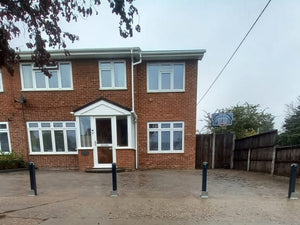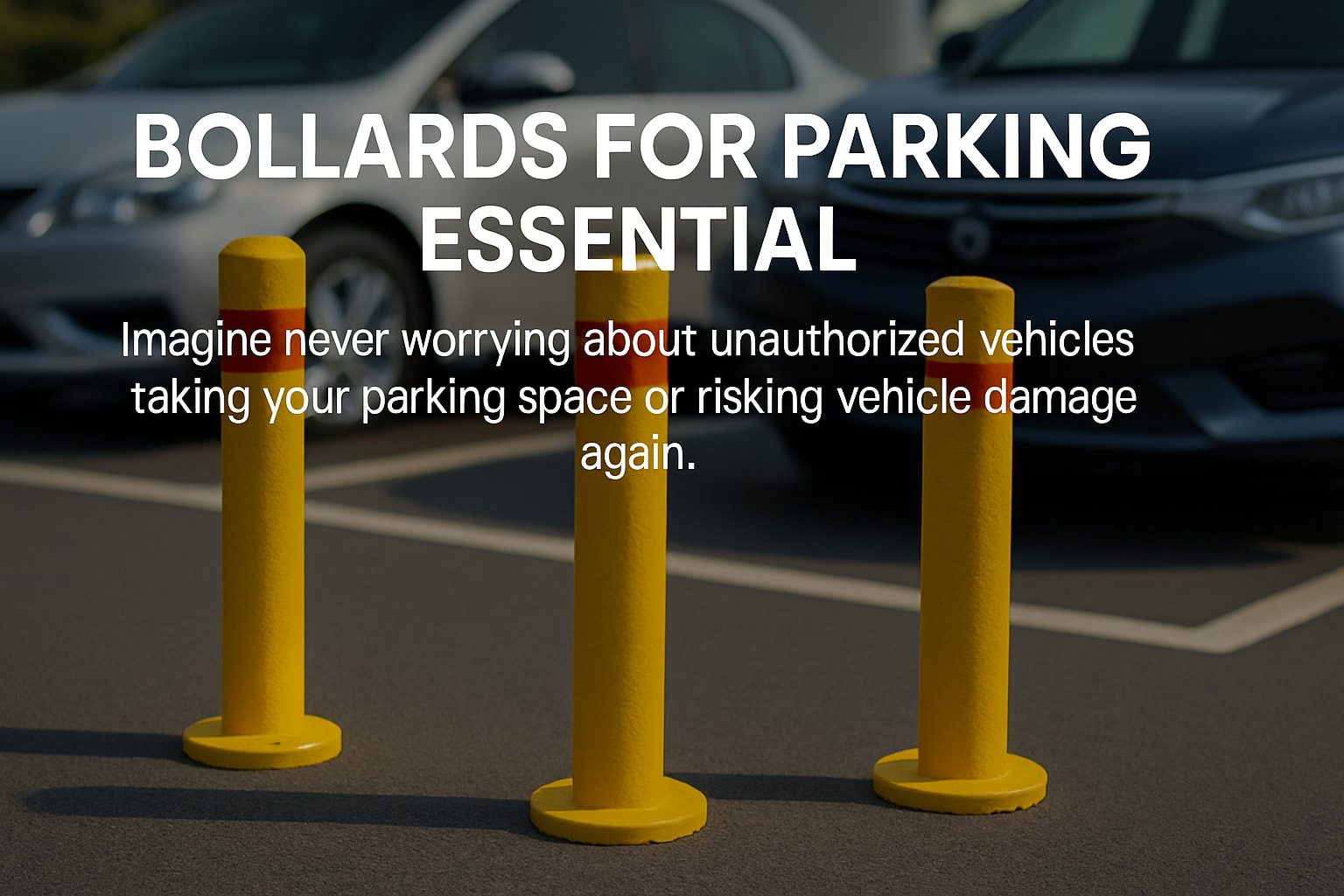
Bollards for Parking: The Essential Guide for 2025
Imagine arriving home or at your business and never having to worry about unauthorised vehicles taking your spot or risking costly damage again. In 2025, the need for reliable parking security is more important than ever. This essential guide to bollards for parking will help property owners, managers, and businesses make informed choices for safer, more secure spaces.
Discover the latest bollard types, step-by-step installation advice, regulatory updates, and future trends. With expert guidance, you can ensure your parking areas remain protected and compliant throughout the year.
Understanding Bollards for Parking: Types and Functions
Parking security is a growing concern for property owners and businesses alike. Bollards for parking are robust, upright posts installed to control vehicle access, protect assets, and ensure safety in designated spaces. These fixtures serve as both a physical and visual deterrent, helping to maintain order and prevent unauthorised entry.
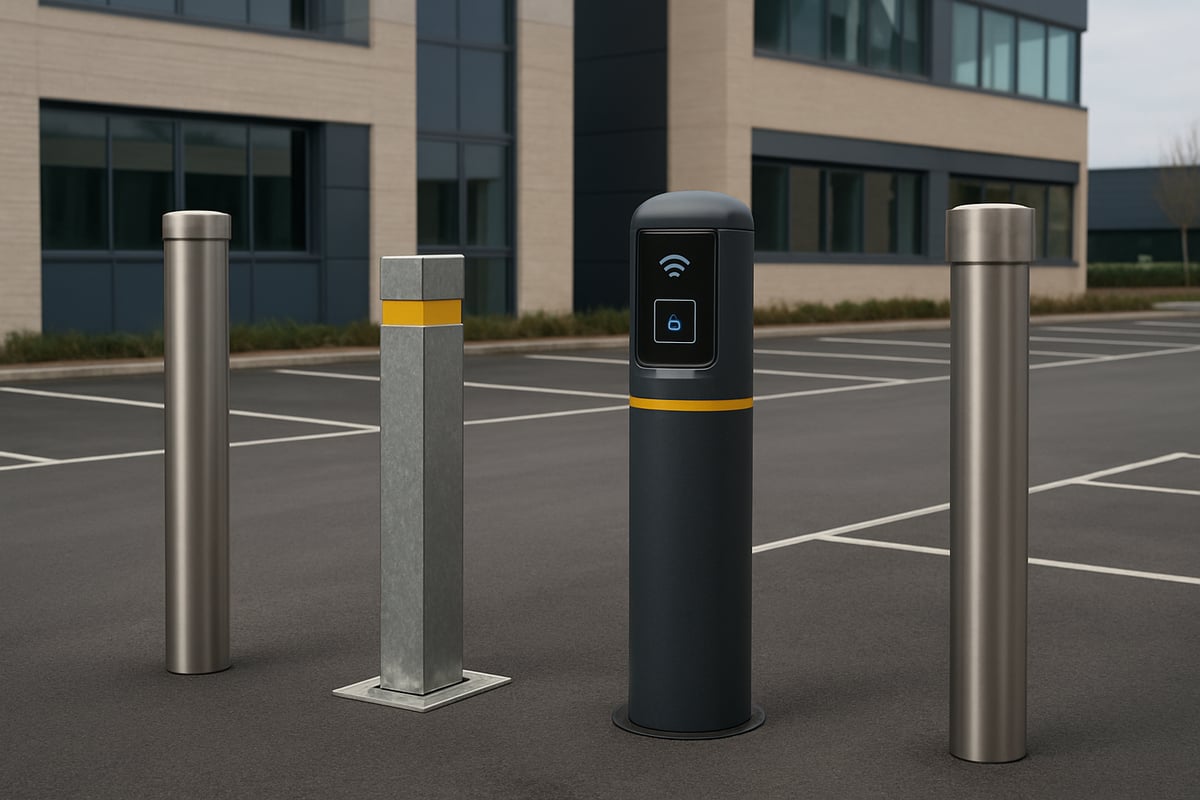
Types of Bollards for Parking
There is a diverse range of bollards for parking, each tailored to specific needs and environments. The most common types include:
- Static bollards: Permanently fixed and highly durable, ideal for long-term perimeter security.
- Telescopic bollards: Retractable into the ground, offering flexible access for authorised users.
- Removable bollards: Can be lifted out when needed, suitable for spaces with variable access requirements.
- Fold-down bollards: Hinged to lay flat, perfect for reserving individual parking bays.
- Automatic bollards: Operated electronically, often integrated with remote controls or access systems.
- Smart bollards: Feature advanced technology such as sensors, automatic number plate recognition (ANPR), or connectivity to smart parking platforms.
To see real-life examples and a comprehensive range of options, visit the Parking Bollards Collection.
Comparing Materials
The performance and longevity of bollards for parking depend heavily on material selection. Here is a quick comparison:
| Material | Durability | Weather Resistance | Maintenance |
|---|---|---|---|
| Steel | High | Good | Moderate |
| Aluminium | Moderate | Excellent | Low |
| Stainless Steel | Very High | Excellent | Very Low |
| Composite | Variable | Good | Low |
Steel and stainless steel are favoured for high-security installations, while aluminium and composite materials suit environments where corrosion resistance and lower maintenance are priorities.
Primary Functions and Use Cases
Bollards for parking serve multiple functions:
- Access control: Restrict or permit vehicle entry as required.
- Vehicle deterrence: Prevent unauthorised parking and ram-raiding.
- Pedestrian safety: Create safe walkways by separating vehicles from foot traffic.
- Asset protection: Safeguard buildings, equipment, and infrastructure.
You will find these bollards in a range of settings, from residential driveways and commercial car parks to public spaces and electric vehicle charging bays. Each environment calls for a specific combination of visibility, security, and functionality.
Real-World Examples and Industry Insights
City centres often use static and telescopic bollards for parking to manage high-traffic zones and protect pedestrian areas. Gated communities benefit from removable or automatic options, providing flexible security. Retail parks frequently combine several types to secure entrances and reserve spaces for customers.
According to industry reports, the UK saw a 15% increase in bollard installations in commercial car parks between 2022 and 2024, driven by heightened security concerns and the growth of electric vehicle infrastructure. These trends highlight the importance of selecting the right bollards for parking to address unique challenges and maximise safety.
Choosing the appropriate bollard type ensures not only compliance and protection but also long-term value for your property or business.
Key Considerations When Choosing Parking Bollards
Choosing the right bollards for parking is a decision that impacts property security, user safety, and long-term value. To make an informed choice, it is essential to assess your site’s unique risks and requirements, consider design and durability, and evaluate your budget for both installation and ongoing maintenance.
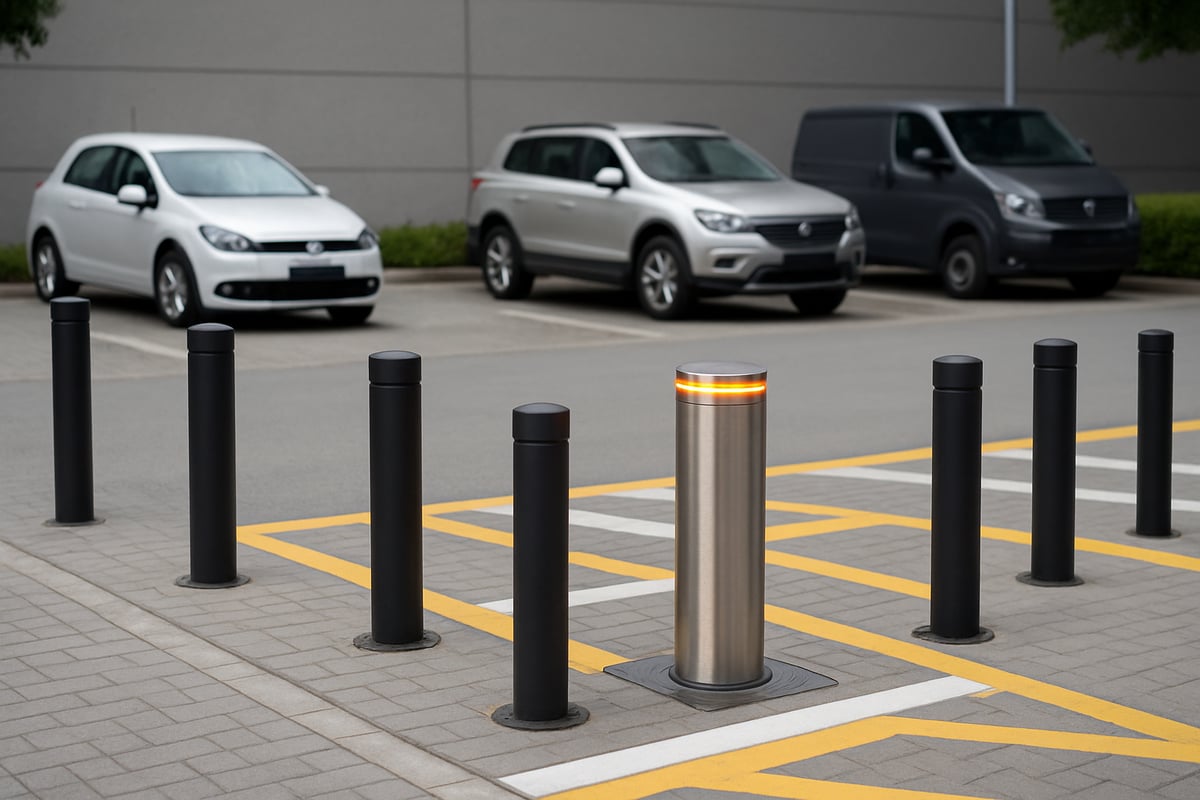
Assessing Security and Safety Needs
Before selecting bollards for parking, start by identifying the specific threats your site faces. Common risks include vehicle theft, ram-raiding, unauthorised parking, and vandalism. Each environment, whether residential or commercial, presents a different risk profile.
For residential driveways, the focus may be on deterring casual trespassers or opportunistic theft. In commercial car parks, the threat level can be higher, requiring robust measures against ram raids or coordinated vehicle attacks. The strength and impact resistance of bollards for parking are crucial here. Look for products certified under PAS 68 or IWA 14-1, which test barriers against vehicle impact. For a detailed comparison of these standards, see this PAS 68 and IWA 14 standards comparison.
Safety for pedestrians and cyclists is equally important. Bollards for parking should be positioned to prevent accidental collisions while still effectively controlling vehicle access.
A real-world example comes from a London retail park, which experienced a marked reduction in vehicle theft after installing anti-ram bollards at key entrances. Insurance providers may also require specific bollard ratings to maintain coverage, making compliance a factor in your selection.
Design, Material, and Aesthetic Factors
Bollards for parking must not only provide security but also complement the surrounding environment. Consider the architectural style of your property. Modern developments often favour sleek, stainless steel or powder-coated options, while heritage sites might require cast iron or traditional designs.
Material choice affects durability and maintenance. Stainless steel offers excellent corrosion resistance and minimal upkeep, making it ideal for exposed locations. Aluminium is lightweight and rust-resistant, while composite materials can provide a blend of strength and reduced maintenance. Weather resistance should be a priority, especially in areas exposed to frequent rain or road salt.
Colour and finish are also important for visibility and branding. High-visibility colours can reduce the risk of accidental impacts, while custom finishes allow you to match existing property features. For more on selecting the right finish, review guidance on Choosing the Right Bollard Colour.
Customisation is possible with many suppliers, offering options like company logos or unique shapes. A city office car park, for example, may opt for brushed stainless steel bollards for parking that blend seamlessly with modern architecture while maintaining a professional appearance.
Budget, Installation, and Maintenance
Budgeting for bollards for parking involves more than just the initial purchase. Upfront costs include the bollards themselves, installation fees, and any necessary groundwork. Long-term costs cover ongoing maintenance, cleaning, and potential repairs or replacements.
Consider whether to install bollards for parking yourself or use professional installers. DIY installation might save money upfront but can lead to issues if not done correctly, especially when dealing with underground utilities or complex surfaces.
Maintenance is another key factor. Regular cleaning and inspections ensure that bollards for parking remain functional and visually appealing. Some models require periodic lubrication or replacement of moving parts.
To illustrate, compare the costs of telescopic versus static bollards:
| Bollard Type | Upfront Cost | Installation | Annual Maintenance | Lifespan |
|---|---|---|---|---|
| Telescopic | £300–£600 | Higher | Medium | 10+ yrs |
| Static | £100–£250 | Lower | Low | 15+ yrs |
Cost-saving tips include bulk purchasing, seeking government grants, or checking for insurance discounts on security upgrades. By weighing all these factors, you ensure your investment in bollards for parking delivers maximum value and protection.
Parking Bollard Regulations and Compliance in the UK (2025 Update)
Ensuring your bollards for parking comply with UK regulations is crucial for both safety and legal reasons. In 2025, property owners, managers, and businesses must navigate evolving legislation, updated standards, and practical requirements when installing parking security solutions. Understanding the regulatory landscape can help you avoid costly mistakes and futureproof your investment.
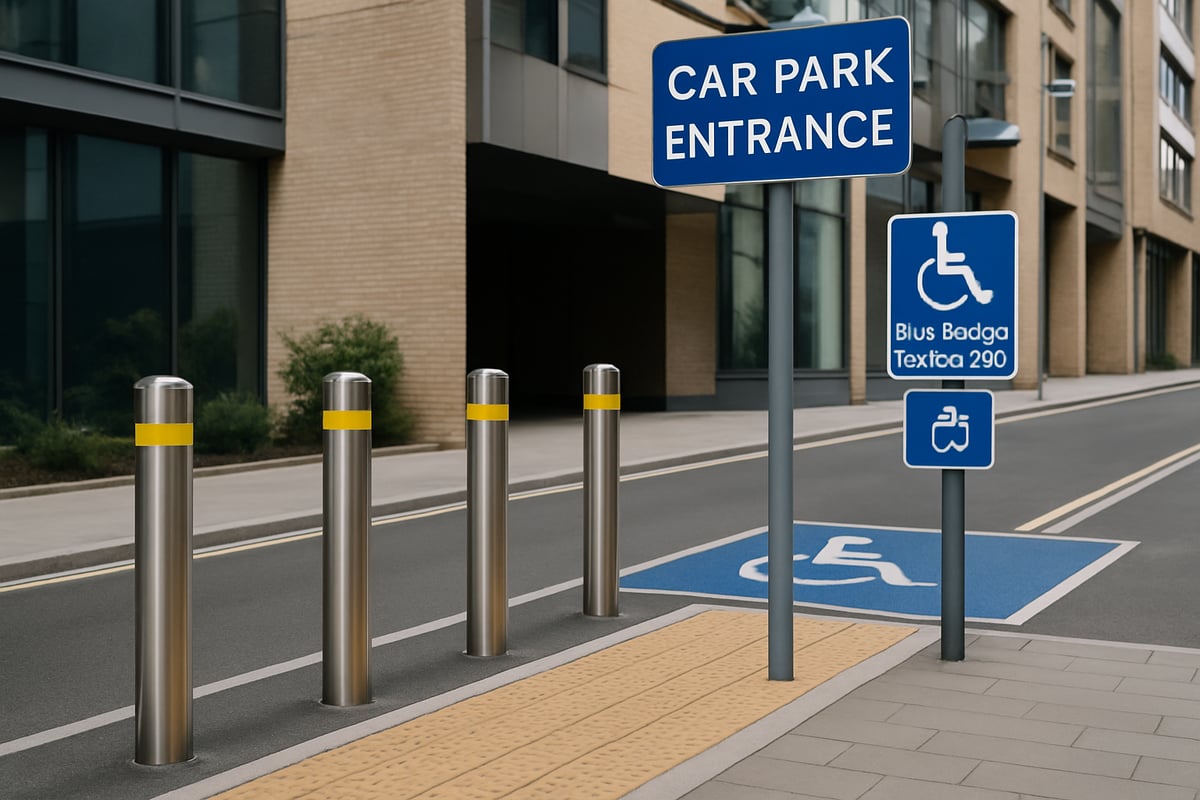
Understanding UK Legislation and Permissions
Bollards for parking installations are subject to national and local rules. Planning permission is often required, particularly for public spaces or listed properties. Local authorities may set specific placement, height, and visibility criteria to ensure bollards do not obstruct pedestrian or emergency access.
Key legislation includes the Highways Act 1980 and the Road Traffic Regulation Act 1984. These acts regulate the use of street furniture, including bollards for parking, and assign responsibility for compliance to property owners and operators. Always check with your local council before starting any installation project.
Standards: PAS 68, IWA 14-1, and Local Authority Requirements
Compliance with recognised standards is essential when selecting bollards for parking. The most widely referenced are PAS 68 and IWA 14-1, which define performance and impact resistance criteria for security bollards. Meeting these standards assures insurers and authorities that your installation can withstand vehicle attacks and deter unauthorised access.
Additional requirements may come from local planning departments, which might specify minimum distances between bollards for parking, their orientation, and surface reflectivity. For a comprehensive summary of these requirements, see the UK bollard regulations overview.
Key Standards Table
| Standard | Focus Area | Typical Use Case |
|---|---|---|
| PAS 68 | Impact Resistance | High-risk commercial car parks |
| IWA 14-1 | International Vehicle | Public spaces, critical buildings |
| Local Req. | Placement, Safety | All residential and public areas |
Accessibility, Fire Safety, and Environmental Regulations
Modern bollards for parking must consider accessibility for everyone. The Equality Act 2010 requires that installations do not create barriers for disabled users. This includes adequate spacing for wheelchair access, tactile indicators for the visually impaired, and clear signage for blue badge bays.
Fire safety and emergency access are equally important. Bollards for parking should allow rapid removal or lowering in emergencies, complying with fire brigade and ambulance protocols.
Environmental regulations are becoming stricter in 2025. Installers should consider bollards made from recycled or sustainable materials, and plan for end-of-life recycling. Councils may require evidence of eco-friendly practices as part of planning approvals.
2025 Updates: Smart Bollards and Council Requirements
The regulatory landscape for bollards for parking is evolving. New 2025 guidance addresses smart and automated bollards, focusing on cybersecurity, remote access controls, and fail-safe mechanisms during power outages.
Some councils now require digital connectivity for public car park bollards, allowing integration with access control systems or emergency response networks. For example, a London borough recently mandated that all new parking bollards in council-run facilities include tactile surfaces, solar-powered lights, and remote monitoring features.
Compliance Risks and Why They Matter
Non-compliance with regulations for bollards for parking can lead to fines, increased liability, or reputational damage. Insurers may refuse claims if installations do not meet required standards, and local authorities can order the removal or modification of non-compliant bollards.
Compliance Risk Table
| Risk Type | Potential Consequence |
|---|---|
| Fines | Up to £20,000 per offence |
| Insurance Refusal | No cover for theft/damage |
| Liability Claims | Personal injury lawsuits |
| Reputational Impact | Negative press, lost trust |
To ensure your investment in bollards for parking is secure, always consult with experts and keep up to date with the latest regulatory developments. Staying compliant not only protects your property but also demonstrates your commitment to safety and accessibility.
Step-by-Step Guide: Installing Parking Bollards in 2025
Securing your parking area with the right bollards for parking starts with a thoughtful, systematic approach. This step-by-step guide ensures you cover every detail, from initial planning through to long-term maintenance. Whether you are protecting a private driveway, commercial car park or public space, following these steps will help you achieve robust, compliant, and long-lasting results.
Step 1: Site Assessment and Planning
The first step in installing bollards for parking is a thorough site assessment. Survey the intended parking area to identify vulnerable points needing protection, such as entrances, exits, pedestrian crossings, or high-value asset zones.
Check for underground utilities before any excavation. Consulting utility maps and using detection tools helps prevent costly mistakes or dangerous incidents. Assess the surface type, whether concrete, tarmac, or paving, as this influences installation methods.
Obtain all necessary permissions and approvals. In the UK, planning consent may be required, especially for installations near public highways or listed properties. Liaise with local authorities to ensure compliance with regulations.
Consider access routes for emergency vehicles and ongoing maintenance. For example, in a multi-storey car park, planning must account for structural load limits and vehicle flow.
A clear site plan, with marked installation points for bollards for parking, will streamline the process. Document all findings and share them with stakeholders before moving to the next step.
Step 2: Selecting the Right Bollard
Choosing the right bollards for parking is crucial for both security and usability. Start by matching the bollard type to your assessed threat level and usage requirements. Static bollards are ideal for permanent barriers, while telescopic or removable models suit areas needing flexible access.
Consider material and finish. Stainless steel offers a modern look and high corrosion resistance, whereas powder-coated steel provides durability and custom colour options. Composite materials are increasingly popular for their light weight and resilience.
Review manufacturer credentials and certifications. Look for compliance with standards such as PAS 68 or IWA 14-1, which indicate tested impact resistance. Reliable suppliers offer full technical documentation and product guarantees.
Custom features like reflective bands, lock types, or branding can enhance safety and match site aesthetics. For residential driveways, telescopic bollards for parking provide a balance between strong deterrence and easy access.
Consult product datasheets and client reviews to ensure your selection meets operational and visual requirements. Confirm installation methods and maintenance needs before purchasing.
Step 3: Professional Installation Process
Professional installation guarantees the effectiveness and longevity of bollards for parking. Begin with ground preparation, including precise excavation according to the bollard's foundation requirements. Ensure proper drainage to avoid future subsidence or corrosion.
Installation techniques vary by surface. For concrete, core drilling creates a stable anchor point, while tarmac or paving may require additional reinforcement. Choosing embedded, surface-mounted, or removable fixing methods depends on your site and bollard specification.
Adhere to safety protocols throughout. Use barriers and signage to safeguard pedestrians and vehicles during works. Coordinate with utility providers if excavation is near underground services.
A typical timeline for installing 10 static bollards in a business car park includes site marking, excavation, fixing, curing, and finishing, often completed within two days by an experienced team. For detailed technical guidance, refer to this high-security bollard installation guide.
Document the installation process with photographs and completion certificates for future reference. This record is vital for insurance, compliance, and ongoing maintenance planning of bollards for parking.
Step 4: Post-Installation Checks and Maintenance
Once your bollards for parking are in place, conduct a thorough inspection. Check alignment, operation, and finish. For retractable or automatic bollards, test movement and locking mechanisms several times.
Initial maintenance includes cleaning, lubrication, and ensuring all signage is visible. Provide user training for any retractable or automated systems so staff or residents understand safe operation.
Set up a regular maintenance schedule. This should cover cleaning, checking for wear, lubricating moving parts, and replacing damaged components. Keep emergency contact details handy for urgent repairs.
A maintenance checklist for commercial parking bollards typically includes:
- Visual inspection for damage or corrosion
- Functional testing of moving parts
- Cleaning and repainting as needed
- Checking signage and reflectivity
Proactive care extends the life of your bollards for parking and maintains their security effectiveness. Regular reviews and prompt attention to issues help avoid costly repairs and ensure ongoing compliance with safety standards.
Bison Products: Leading British Parking Bollard Solutions
For over five decades, Bison Products has set the benchmark for British-made bollards for parking. Established in 1972, this trusted manufacturer has earned a reputation for robust engineering and unwavering commitment to quality. Property owners, managers, and businesses across the UK rely on Bison’s expertise to secure their parking spaces with confidence.

Bison’s comprehensive range of bollards for parking covers every requirement, from static and telescopic models to removable and automatic solutions. Each product is crafted using high-grade materials, including galvanised steel and stainless steel, ensuring long-lasting durability and resistance to weather or corrosion. For those seeking the latest in security and smart access, Bison offers innovative options that integrate seamlessly with modern parking environments. You can learn more about how these advancements are shaping the industry in their post on Innovative Technologies in Parking Bollards.
Customisation is at the heart of Bison’s service. Whether you manage a residential driveway, commercial car park, or a public space, you can choose finishes, colours, and locking mechanisms tailored to your needs. The flagship Ramco 100 Heavy-Duty Telescopic Driveway Bollard stands out for its formidable strength and user-friendly design. Customers consistently praise its ease of operation and resilience, making it a top choice for those prioritising both security and convenience.
Here’s a quick comparison of popular Bison bollards for parking:
| Model | Type | Material | Application | Key Feature |
|---|---|---|---|---|
| Ramco 100 | Telescopic | Galvanised Steel | Residential/Commercial | Heavy-duty, easy lift |
| Static 114 | Static | Stainless Steel | High-traffic zones | Low maintenance |
| Removable 90 | Removable | Powder-coated | Temporary control | Quick removal |
| Auto 140 | Automatic | Steel/Composite | Smart car parks | Remote control |
Bison Products supports every client with tailored advice, supply-only, or fully installed solutions across the UK. Their end-to-end customer support, heritage, and technical know-how set them apart. If you want to explore how bollards for parking contribute to urban safety and planning, their guide on The Role of Parking Bollards in Urban Planning offers valuable insights.
From initial consultation to expert installation, Bison Products remains the go-to provider for reliable, British-made bollards for parking. Protect your assets and enhance your property’s security with solutions trusted nationwide.
Future Trends: Smart Parking Bollards and Innovations for 2025
The landscape of bollards for parking is evolving rapidly, with 2025 set to be a year of significant innovation. Today’s property owners and managers are seeing a shift from traditional static solutions to smart, connected systems that offer enhanced security and user convenience.
Emerging Technologies in Bollards for Parking
One of the most significant trends is the integration of bollards for parking with advanced access control and Automatic Number Plate Recognition (ANPR) systems. Smart bollards now connect seamlessly to IoT platforms, allowing real-time monitoring and remote management through mobile apps or secure web interfaces.
With these innovations, property managers can automate vehicle entry and exit, track occupancy rates, and receive instant alerts if a security breach occurs. Data-driven analytics enable better decision-making, improving both security and resource allocation in busy car parks.
Sustainability and Energy Efficiency
Environmental considerations are driving the next generation of bollards for parking. Manufacturers are increasingly using recycled materials and low-impact composites to reduce carbon footprints. Solar-powered bollards are gaining popularity, offering low-maintenance operation and reducing reliance on grid power.
Many new models feature energy-efficient LED lighting, which enhances visibility at night while conserving power. These advances align with broader sustainability goals and support compliance with evolving UK regulations.
Automation and User Experience
Automation is transforming the way users interact with bollards for parking. Remote operation via smartphone apps is now commonplace, allowing residents, staff, or authorised visitors to control access without physical keys or cards.
Smart systems can integrate with building management platforms, linking bollard operation to security cameras and alarms. Real-time monitoring improves response times to incidents, while scheduled operation reduces administrative overhead. Compliance with Secured by Design barriers standards ensures that these innovations meet the highest impact and security requirements.
Case Study: Smart Bollards in Action
A recent installation in a UK city centre car park highlights the benefits of modern bollards for parking. The site deployed automatic, solar-powered models equipped with ANPR and occupancy sensors. The system provided seamless entry for registered vehicles, reduced unauthorised parking, and generated analytics for demand forecasting.
Facility managers reported a noticeable drop in security incidents and improved customer satisfaction. The ability to monitor and control access remotely also reduced operational costs and improved efficiency.
Market Growth and Future Outlook
Industry forecasts predict robust growth in the market for bollards for parking, with the adoption of smart, automated, and sustainable solutions leading the way. As technology becomes more affordable and regulations continue to evolve, more businesses and local authorities are expected to invest in these advanced systems.
Looking ahead, the convergence of data analytics, automation, and eco-conscious design will continue to shape the sector. For property managers and businesses, staying informed about these trends is essential to ensure that parking security remains effective, compliant, and future-proof.
Now that you understand the different types of parking bollards, key considerations for choosing the right solution, and the latest UK regulations, you’re in a strong position to protect your spaces in 2025. Whether you’re looking to secure a residential driveway or a commercial car park, having the right bollard is essential for both safety and peace of mind. As a British manufacturer with decades of expertise, we’re here to help you find a tailored, reliable solution that fits your needs. Ready to take the next step? Choose Your Bollard and secure your parking with confidence.

